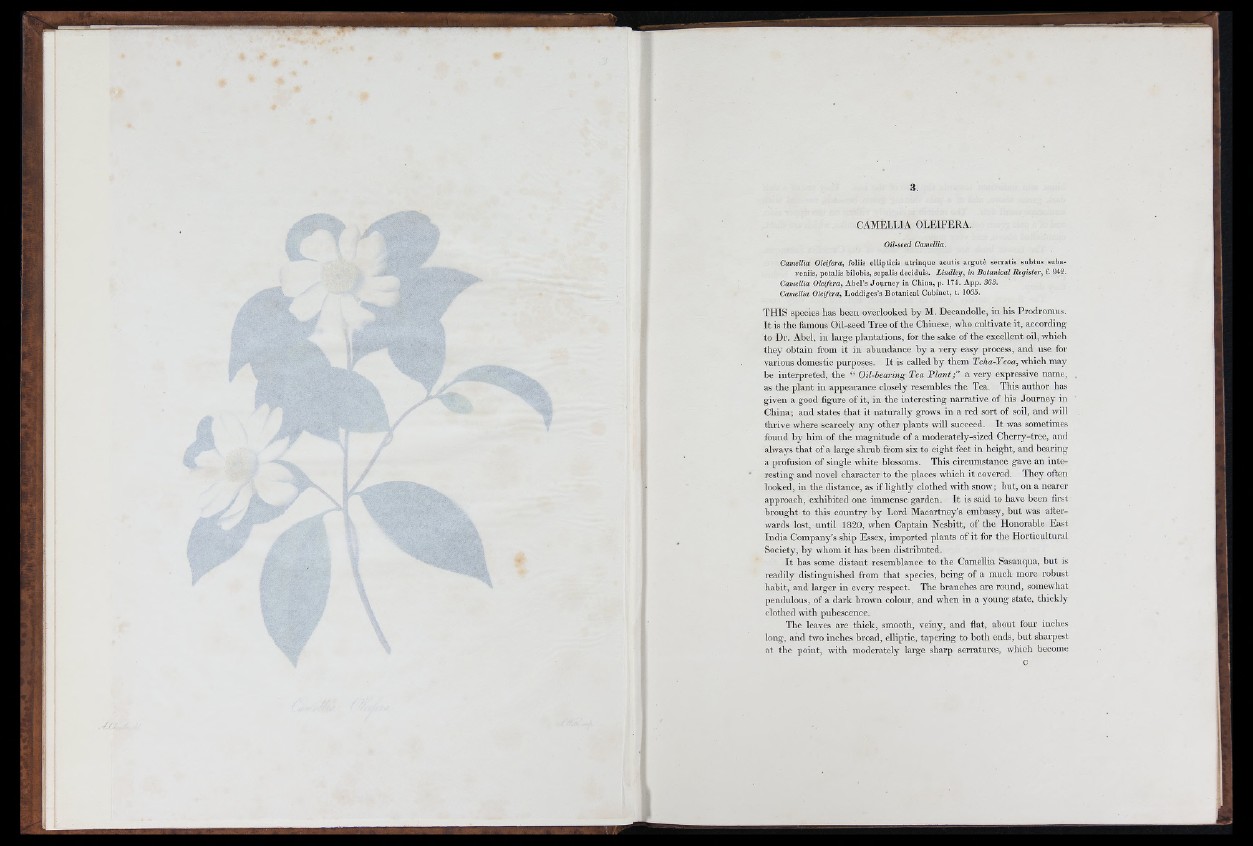
CAMELLIA OLEIFERA.
O ils e e d Camellia.
Camellia Oleifera, fo liis e llip tic is u tr in q u e a c u tis a rg u te s e r r a tis s u b tu s suba-
veniis, p e ta lis b ilo b is , sep a lis de c iduis. L in d le y , in B o ta n ic a l Registe r, f. 942.
Camellia Oleifera, A b e l’s J o u rn e y in C h in a , p. 174. A p p . SG3.
Camellia Oleifera, L o d d ig e s ’s B o ta n ic a l C a b in e t, t. 1065.
THIS species has been overlooked by M. Decandolle, in his Prodromus.
I t is the famous Oil-seed Tree of the Chinese, who cultivate it, according
to Dr. Abel, in large plantations, for the sake of the excellent oil, which
they obtain from it in abundance by a very easy process, and use for
various domestic purposes. I t is called by them Tcha-Yeoa, which may
be interpreted, the “ Oil-bearing Tea P la n t;” a very expressive name,
as the plan t in appearance closely resembles the Tea. This author has
given a good figure of it, in the interesting narrative of his Journey in
China; and states th a t it naturally grows in a red sort of soil, and will
thrive where scarcely any other plants will succeed. I t was sometimes
found by him of th e magnitude of a moderately-sized Cherry-tree, and
always th a t of a large shrub from six to eight feet in height, and bearing
a profusion of single white blossoms. This circumstance gave an interesting
and novel character to the places which it covered. They often
looked, in the distance, as if lightly clothed with snow; but, on a nearer
approach, exhibited one immense garden. I t is said to have been first
brought to this country b y Lord Macartney’s embassy, b u t was afterwards
lost, u n til 1820, when Captain Nesbitt, of the Honorable East
India Company’s ship Essex, imported plants of it for the Horticultural
Society, by whom it has been distributed.
I t has some distant resemblance to th e Camellia Sasanqua, b u t is
readily distinguished from th a t species, being of a much more robust
habit, and larger in every respect. The branches are round, somewhat
pendulous, of a dark brown colour, and when in a young state, thickly
clothed with pubescence.
The leaves are thick, smooth, veiny, and flat, about four inclies
long, and two inches broad, elliptic, tapering to both ends, b u t sharpest
at the point, with moderately large sharp serratures, which become